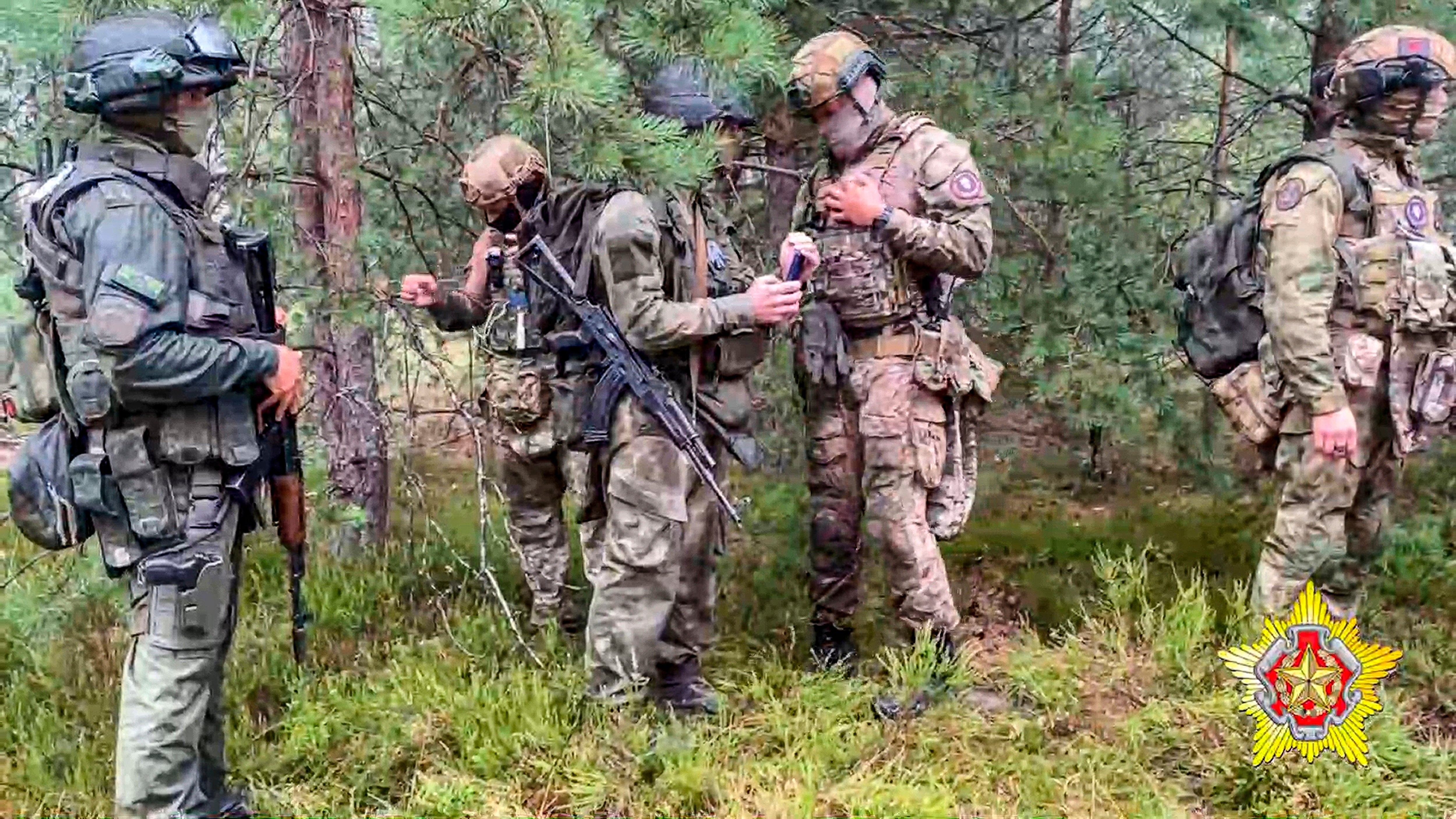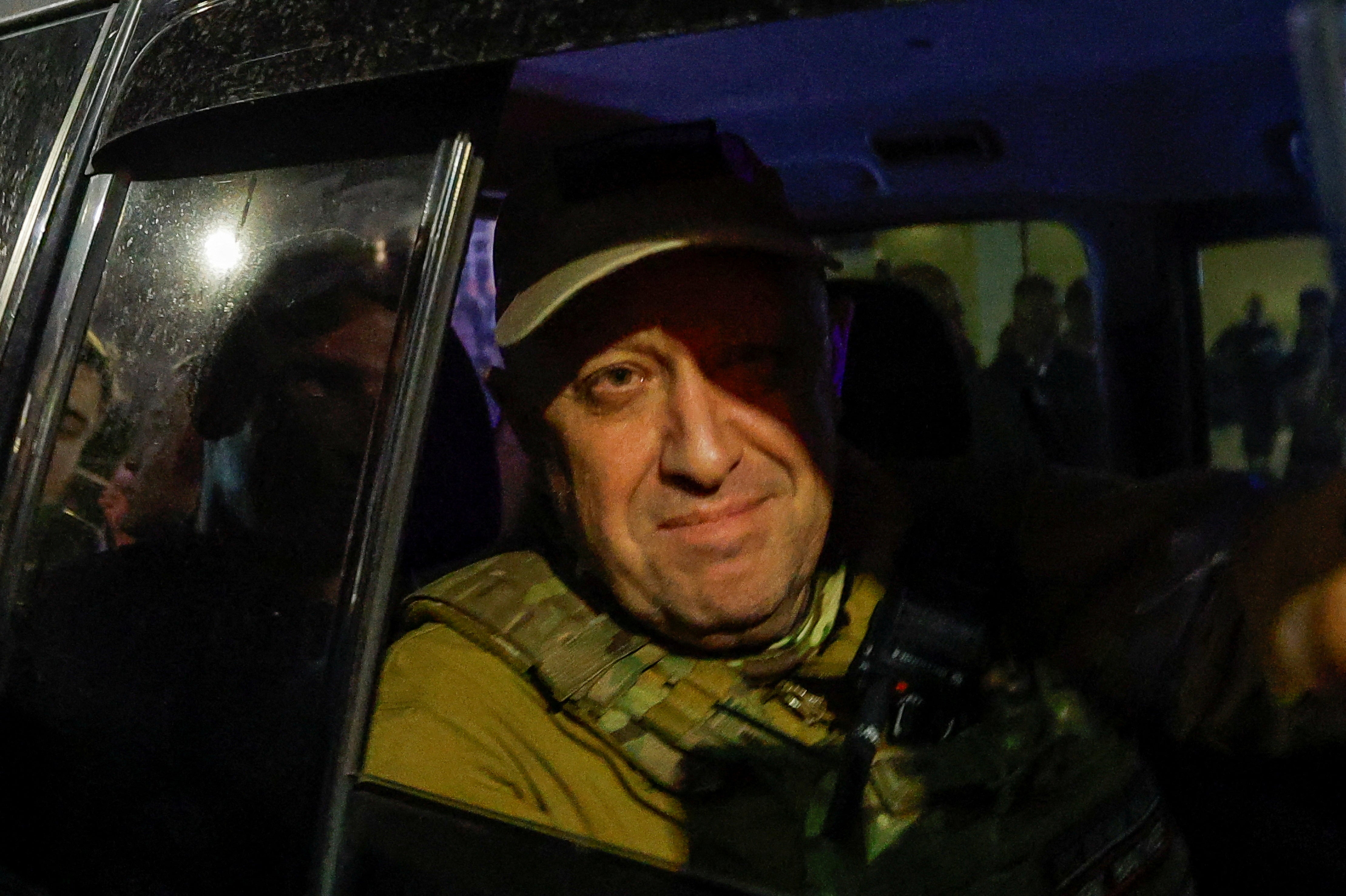Wagner tracker: Charting Yevgeny Prigozhin’s mercenary group through the Ukraine war
From Bucha to the battle for Bakhmut, we track Wagner’s bloody role in Vladimir Putin’s invasion
Your support helps us to tell the story
From reproductive rights to climate change to Big Tech, The Independent is on the ground when the story is developing. Whether it's investigating the financials of Elon Musk's pro-Trump PAC or producing our latest documentary, 'The A Word', which shines a light on the American women fighting for reproductive rights, we know how important it is to parse out the facts from the messaging.
At such a critical moment in US history, we need reporters on the ground. Your donation allows us to keep sending journalists to speak to both sides of the story.
The Independent is trusted by Americans across the entire political spectrum. And unlike many other quality news outlets, we choose not to lock Americans out of our reporting and analysis with paywalls. We believe quality journalism should be available to everyone, paid for by those who can afford it.
Your support makes all the difference.Since Vladimir Putin rose to power as Russia’s president 23 years ago, few things have rocked his leadership as much as Saturday 24 June when Wagner mercenaries barrelled towards Moscow.
The “army within an army” who had been ruthlessly grinding away for months at the vanguard of some of the bloodiest fighting in eastern flanks Ukraine were now on the verge of triggering a war within a war - this time, against the Kremlin.
But the Russian president was spared that when the mutiny was halted in its tracks about 125 miles from the capital, in a deal between the leader of the mercenary group, Yevgeny Prigozhin and Putin – brokered by Belarusian President Alexander Lukashenko. Prigozhin himself was due to head to Belarus – although he has been pictured in Russia since – with an invitation for Wagner fighters to gather in Belarus. Thousands are set to entered the country since.
Nato-member Poland is sending thousands of troops to its border with Belarus, with Warsaw worried increasingly about the potential threat from Wagner fighters, who have been training Belarusian troops at a military range a few miles from the border in recent weeks.
Belarus also started military exercises near the border this week, and Lukashenko has said several times that he is restraining Wagner fighters who want to attack Poland.

What is the Wagner Group?
The Wagner Group is a private military company under the control of Prigozhin that cut its teeth in deployments to Crimea – illegally annexed by Russia – and Ukraine’s eastern Donbas region in 2014.
The rebel group has since dispatched troops to several conflicts in the Middle East and Africa, including the Syrian civil war.
Prigozhin – a 62-year-old ex-convict sometimes known as “Putin’s chef” because his catering business has hosted dinners for the Russian president – had denied all links with the group until September last year when he announced he was “proud” to be its founder.
When did they join the Ukraine war?
The UK’s Ministry of Defence (MoD) first reported that Wagner had been deployed in Ukraine on 28 March 2022, little over a month into Moscow’s invasion – after Russian losses had already begun to hamper the pace of the initial assault.
Military consultant Nicholas Drummond told The Independent: “Wagner was involved from the start but the group started to become a key player when the initial assault ran into difficulty.
“By the end of March, it was very evident that the invasion had gone wrong. Putin used Prigozhin as a troubleshooter and Wagner was there to fill the gaps.”

Former Nato commander Hamish de Bretton-Gordon emphasised Wagner’s crucial role in strengthening Russia’s offensive in the war.
Speaking to The Independent, the former commander of the 1st Royal Tank Regiment of the British army, said: “In the early stages of war when Wagner wasn’t heavily committed, the Russian army pretty much nearly collapsed.”
“Wagner fights with no boundaries. Criminals fill the ranks of the army. When all of this is over, I’m sure there are going to be horrific things conducted in Wagner’s name.”
Below we track Wagner’s involvement in the invasion of Ukraine and their infamous- but failed- march to Moscow:
Crimea:
In February 2014, were used to help Russia illegally annex Ukraine’s Crimean peninsula.
Crimea sits at the top of the Black Sea. The annexation condemned by countries in the West, including the UK.
The mercenary group was also involved in Russia’s invasion of eastern Ukraine throughout 2015, where they allegedly carried out assassinations of local rebel leaders.
Kyiv:
In March 2022, weeks after Putin launched his invasion, reports suggested a special group had been sent into Kyiv to take out Zelensky.
This resulted in a strict 36-hour curfew in Kyiv as Ukrainian soldiers reinforced the capital to protect Zelensky and his government.
Since then, reports of Wagner’s activities have mainly focused on the eastern regions of Ukraine, though Kyiv remains a target of ceaseless strikes and artillery from the Russian army.

Bucha:
In the first week of April 2022, sickening images of a massacre in Bucha began to emerge following weeks of Russian occupation.
Just days after Russian troops withdrew from the city, hundreds of bodies were discovered in the city approximately 16 miles northwest of Kyiv, some in mass graves.
While Kremlin has always denied causing civilian deaths – although their credibility over such matters is thin at best. Interceptions by the Bundesnachrichtendienst (BND), Germany’s foreign intelligence service, found evidence to suggest Wagner may be linked to the massacre, Der Spiegel reported.

Bakhmut:
In May 2022, Wagner began an offensive towards the town of Soledar and the city of Bakhmut in the eastern Ukranian province of Donetsk. It is an area that Putin seeks to control.
The battle for Bakhmut has seen some of the most fierce fighting in the war. Located around 34 miles north of Donetsk, the region was an important industrial centre before being ravaged by war.
In July, Prigozhin was given the green light to beef up his troops and began recruiting prisoners on a large scale, unconcerned about the type of crime they had committed.

By the end of October 2022, the group gained at least 20,000 conscripts, which then more than doubled to 50,000 by the end of January 2023.
Between November 2022 to January 2023, Wagner captured the salt-mining town of Soledar and strengthened its position in the south and north of Bakhmut.
Fast-forward to May 2023, after months of merciless fighting, Prigozhin claimed to have captured Bakhmut and began withdrawing his troops from the city.

The march to Moscow:
Towards the end of June 2023, Prigozhin claimed Wagner fighters were deliberately shelled by Kremlin’s soldiers while leaving Bakhmut.
This seemed to be the last straw for Prigozhin who had been complaining publicly for weeks about the slaughter of Wagner soldiers due to a lack of ammunition from Moscow.
A power struggle was very publicly playing out between the Russian defence ministry and Prigozhin.
On Friday 23 June, Prigozhin accused Russia’s defence minister, Sergei Shoigu, of “destroying” his fighters and concocting lies to justify the invasion of Ukraine. Months of videos rants had been directed by Prigozhin towards Shoigu, with the Wagner leader getting increasingly riled about the actions of the Defence Ministry and the Russian military top brass as the invasion dragged on.
A call to action was made by the mercenary group leader, inciting an armed rebellion heading to Kremlin in Moscow.

Leaving their stations in the east, Wagner soldiers began their march to the capital and within hours had successfully occupied military headquarters in Rostov and Voronezh on the morning of Saturday 24 June. The group shot down Russian helicopters and and took out Russian artillery as they made their way up the main road to Moscow.
The rebel group was seen as far north as Yelets in the evening, just 125 miles from Moscow, before the coup was suddenly called off at the 11th hour by Prigozhin, following the deal with the Kremlin.
Belarus and beyond?
Following the attempted rebellion in June, thousands of Wagner mercenaries arrived in Belarus.
A deal was struck under which the mercenaries would move to Belarus in return for charges against them relating to the uprising being dropped. Putin said the fighters could either leave for Belarus, come under the command of the defence ministry or go back to their families.
Before moving to Belarus, Wagner handed over its weapons to the Russian military, part of efforts by Russian authorities to defuse the threat posed by the mercenaries.

Between 3,450 and 3,650 soldiers have travelled to a camp close to Asipovichy, a town about 140 miles (230km) north of the Ukrainian border, according to Belaruski Hajun, an activist group that tracks troop movements within the country.
Satellite images show that about 700 vehicles, along with construction equipment, have also arrived in Wagner convoys to Belarus, Belaruski Hajun said.
They have also helped train Belarusian troops at a military range near the city of Brest.
Prigozhin also registered a “real estate management company” in Belarus last week under the name Concord Management and Consulting in Belarus. Documents analysed by independent Belarusian media outlets showed that the company’s registered address is in the same village as the Wagner mercenary camp.

Asked about what Prigozhin’s next move could be, Mr de Bretton-Gordon said: “People like Prigozhin are wardogs, they are out to make money out of conflict.
“He is now lining his pockets with as much as gold as he can. I think he will stay in Belarus as long as the money stays floating.”
Mr Drummond questioned Prigozhin’s motives in Belarus, noting there are several factors at play.
“Is he acting as a reserve force in case Putin wants to open a fresh front against Kyiv, or has he genuinely been banished and is considered too powerful to do anything?”
But like Mr de Bretton-Gordon, Mr Drummond does not think the Russian president has alienated Prigozhin, but more likely placed him in a “state of suspended animation”.
“Prigozhin has suddenly realised he could go straight into Moscow, and then he stopped and turned around. I think he freaked Putin out.”




Join our commenting forum
Join thought-provoking conversations, follow other Independent readers and see their replies
Comments